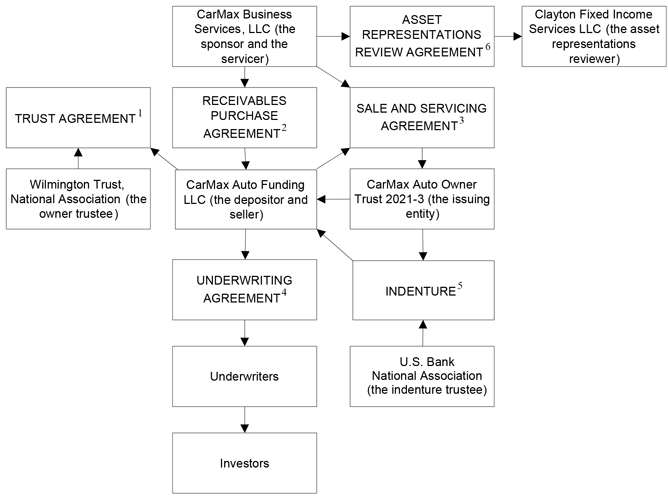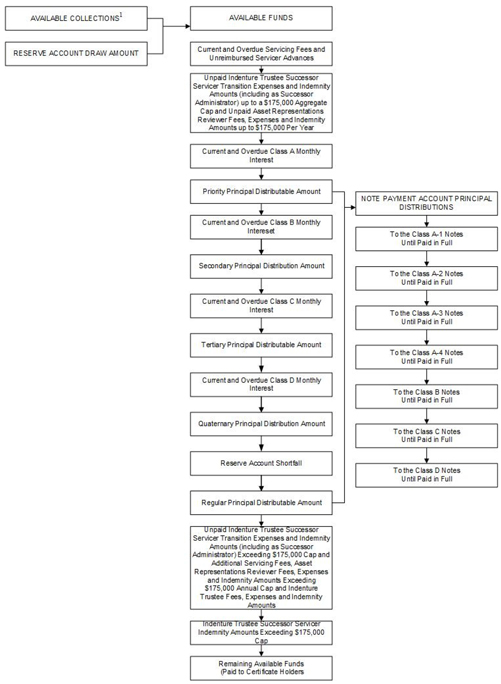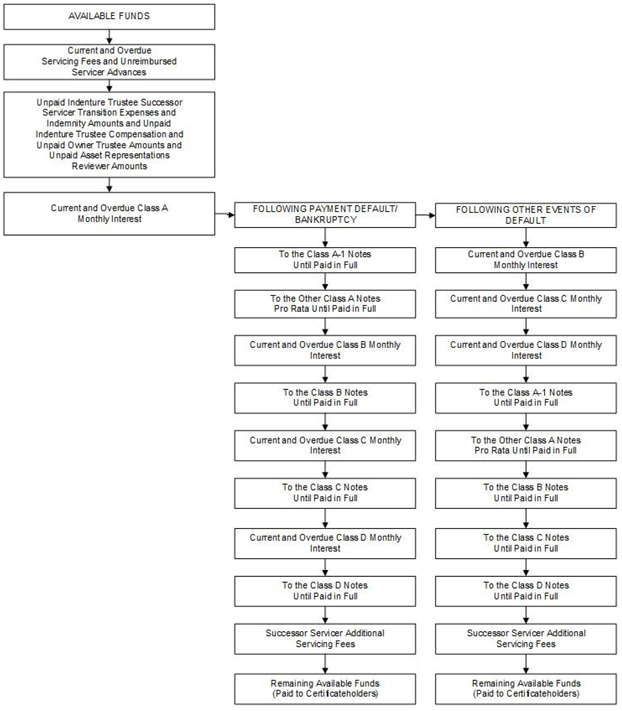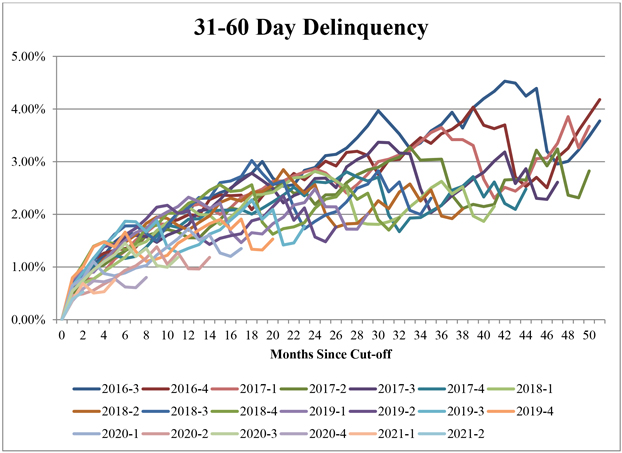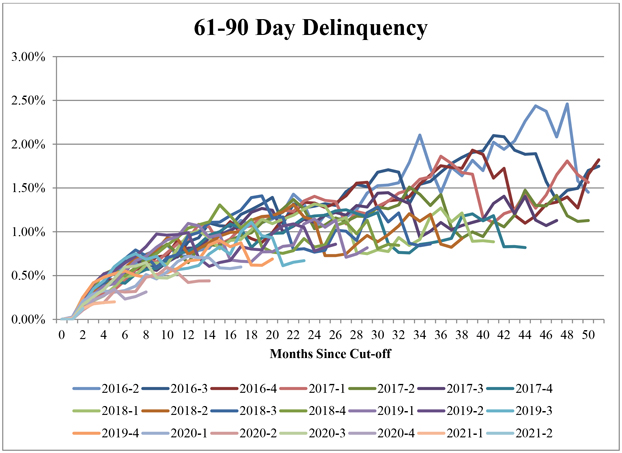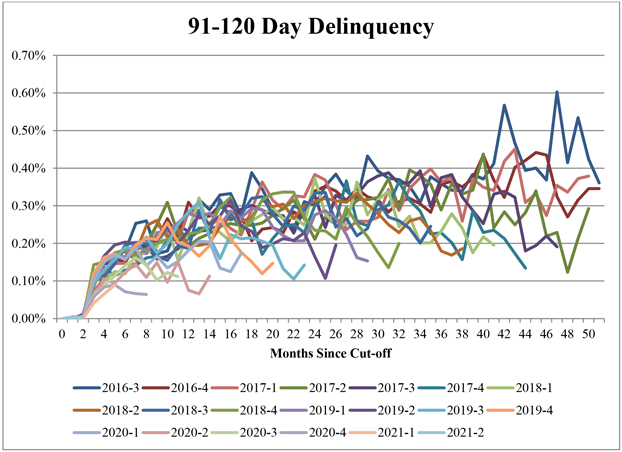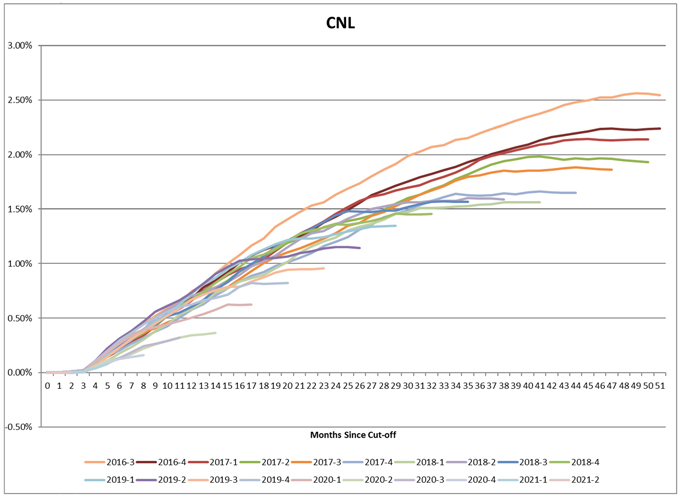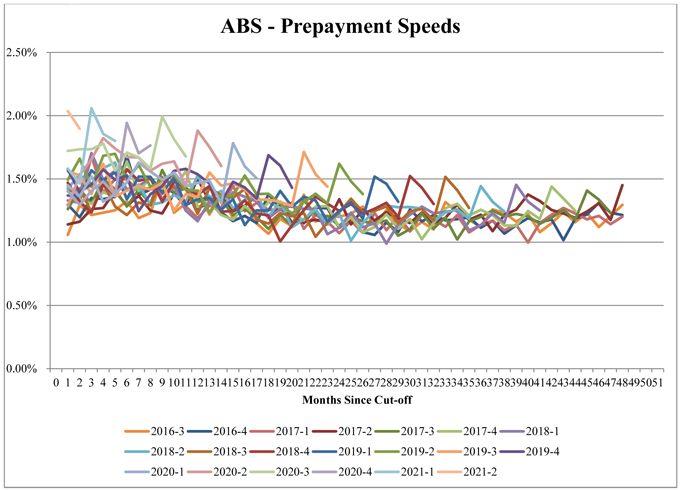“Primary Underwriting Program” means the program by which receivables are originated under the underwriting procedures described under “The CarMax Business—Underwriting Procedures” in this prospectus.
“Principal Balance” means, as of any time, for any Receivable, the outstanding principal balance of such Receivable determined in accordance with the Servicer’s customary servicing practices; provided, however, that the Principal Balance of a Defaulted Receivable will be zero as of the last day of the Collection Period during which it became a Defaulted Receivable and the Principal Balance of a Purchased Receivable will be zero as of the last day of the Collection Period during which it became a Purchased Receivable.
“Priority Principal Distributable Amount” means, with respect to any Distribution Date, the excess, if any, of the principal amount of the Class A Notes on that Distribution Date (before giving effect to any payments made to holders of the Notes on that Distribution Date) over the Pool Balance as of the last day of the related Collection Period; provided, however, that, on and after the Final Scheduled Distribution Date for any class of Class A Notes, the Priority Principal Distributable Amount will not be less than the amount that is necessary to reduce the outstanding amount of that class of Class A Notes to zero.
“Purchase Amount” means the price at which the Seller or the Servicer must purchase a Receivable, which price equals the Principal Balance plus interest accrued thereon at the Contract Rate specified in the Receivable to but excluding the Distribution Date on which such repurchase occurs.
“Purchased Receivable” means a Receivable repurchased from the Trust by the Seller or the Servicer because of a breach of a representation, warranty or servicing covenant under the Sale and Servicing Agreement.
“Quaternary Principal Distributable Amount” means, with respect to any Distribution Date, (i) the excess, if any, of the sum of the principal amount of the Class A Notes, the Class B Notes, the Class C Notes and the Class D Notes on that Distribution Date (before giving effect to any payments made to the holders of the Notes on that Distribution Date) over the Pool Balance as of the last day of the related Collection Period minus (ii) the sum of the Priority Principal Distributable Amount, the Secondary Principal Distributable Amount and the Tertiary Principal Distributable Amount, in each case for that Distribution Date; provided, however, that, on and after the Final Scheduled Distribution Date for the Class D Notes, the Quaternary Principal Distributable Amount will not be less than the amount that is necessary to reduce the outstanding amount of the Class D Notes to zero.
“Rating Agency” means each of the two nationally recognized statistical rating organizations hired by the sponsor to assign ratings to the Notes.
“Rating Agency Condition” means, with respect to any action, a condition that is satisfied if the person requesting such action (i) delivers a letter from each Rating Agency to the depositor, the Seller, the Servicer, the Indenture Trustee and the Owner Trustee to the effect that such action will not result in a reduction or withdrawal of the then-current rating assigned by such Rating Agency to any class of Notes or (ii) provides ten (10) Business Days’ prior written notice of such action to each Rating Agency and such Rating Agency has not notified the depositor, the Seller, the Servicer, the Indenture Trustee and the Owner Trustee in writing that such action will result in a reduction or withdrawal of the then-current rating assigned by such Rating Agency to any class of Notes.
“Receivables” means the motor vehicle retail installment sale contracts transferred by the Seller to the Trust.
“Receivables Purchase Agreement” means the Receivables Purchase Agreement, dated as of July 1, 2021, between CarMax Business Services and the Seller, as amended or supplemented.
“Record Date” means, with respect to any Distribution Date, the Business Day preceding that Distribution Date or, if the related Notes are issued as definitive securities, the last Business Day of the preceding month.
“Reference Time” means, for an Interest Period, (a) if the Benchmark is LIBOR, 11:00 a.m. (London time) on the Benchmark Determination Date, and (b) if the Benchmark is a rate other than LIBOR, the time on the
143

